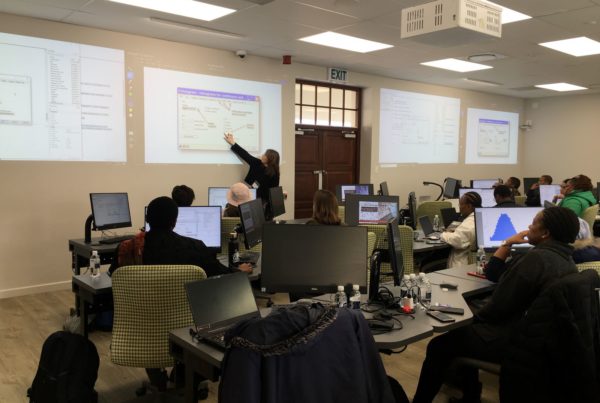This article was originally published online here: 11/02/2021
I recently read a remarkable novel about two childhood friends called “My Brilliant Friend” by Elena Ferrente. It is an intimate tale about the nature of friendship between two women, but its powerful description of poverty and hardship in 1950s Naples and the desperate attempts of its main characters to escape their dire circumstances feels all too familiar.
It is a story that could be set anywhere and everywhere. The plot wrestles with the question of who is willing to step into a child’s journey and alter its course. The girls have a powerful, though unassuming advocate in their primary school teacher. It is Maestra Oliviero who encourages the girls to stay in school and convinces Elena’s parents that investing their meagre resources in her education is not a complete waste of money. Her influence looms large and leaves a lasting impression on the lives of these two women.
For better or worse, all of our careers are shifted, shaped and sometimes shortened by influential figures in our lives. When it comes to women in Science, Technology, Engineering and Mathematics (STEM) fields, access to support structures are even more important for growth and development. Unfortunately, many females still have to overcome barriers of prejudice and inequality. On the International Day of Women and Girls in Science (11 February), we are once again reminded of how women are under-represented in science-subject streams at university and the pool of female professionals in technical areas remains frustratingly small. Although women account for half of the college-educated work force in the United States, only 28% of science and engineering employees is female. Closer to home, results of the 2018 South African National Senior Certificate Examination showed that 54% of female candidates who wrote mathematics achieved at 30% and above in comparison to 64% of male candidates.
While there are many efforts to improve the gender balance in STEM careers, one promising possibility is mentorship. Traditionally, a mentoring relationship involves two people who are at different stages in their careers. The mentor has usually progressed further and gives advice to a less experienced mentee about professional and personal growth. Some organisations have formal programmes with clear guidelines about the roles and responsibilities of participants.
Often, it’s neither possible nor practical to establish a conventional mentorship. Peer mentoring is a useful alternative. In this case, two or more fellow travellers support each other, depending on the skills and experience that each can offer to the rest of the group. The growth of digital communication has certainly expanded the possibilities for connections to be made. One notable example is the Million Women Mentors, which focuses on connecting women with an interest in developing their STEM careers.
Some mentoring arrangements are more successful than others and being aware about what makes for a productive match is worthwhile. This is especially important during a public health crisis when time and energy are severely strained. For the mentor, a good place to start is to set clear expectations from the very beginning about the frequency of meetings, their length and their purpose. A mentor with several mentees might consider combining separate meetings into a single one so that mentees can engage in peer-to-peer mentorship, while the mentor offers advice to the group as a whole. An advantage of the remote working environment is the abundance of webinars and virtual meetings. Mentors might consider inviting mentees to such events. This could prove to be a non-threatening environment for mentees to expand their professional networks and learn about current debates.
There are also useful points for a mentee to keep in mind. While it’s not always possible to find a mentor who fully aligns with their expectations, one needs to be clear about what qualities are most important. Sometimes, what makes the most sense is to identify someone with the career experience and influence that is useful. At other times, it is better to work with a mentor whose professional outlook and leadership style is admired, bearing in mind that this could be someone slightly removed from one’s field. The mentee should understand that their mentor’s time is valuable, prepare well and express a commitment to personal growth. This will ensure that the benefits of each meeting are maximised. Communication is a key ingredient for healthy mentoring. Mentees need to share their short and long-term goals with their mentor and revisit them where necessary.
Finally, while it’s tempting to restrict our definition of mentors to those career professionals or peers whom we admire, mentorship starts far earlier than that. In a recent about women in policy leadership, Dr Fiona Hill stresses that her earliest mentors were actually her family and neighbours. She was inspired by watching how committed they were to social justice in her humble Northern England community. And she was reassured by their resolve that she was capable of finding solutions to the problems around her, rather than settling for things as they were.
Without a doubt, a few words can go a long way when it comes to pointing someone in the right direction. The same holds true for women and girls who aspire to STEM careers.
Photo credit: RF._.studio







